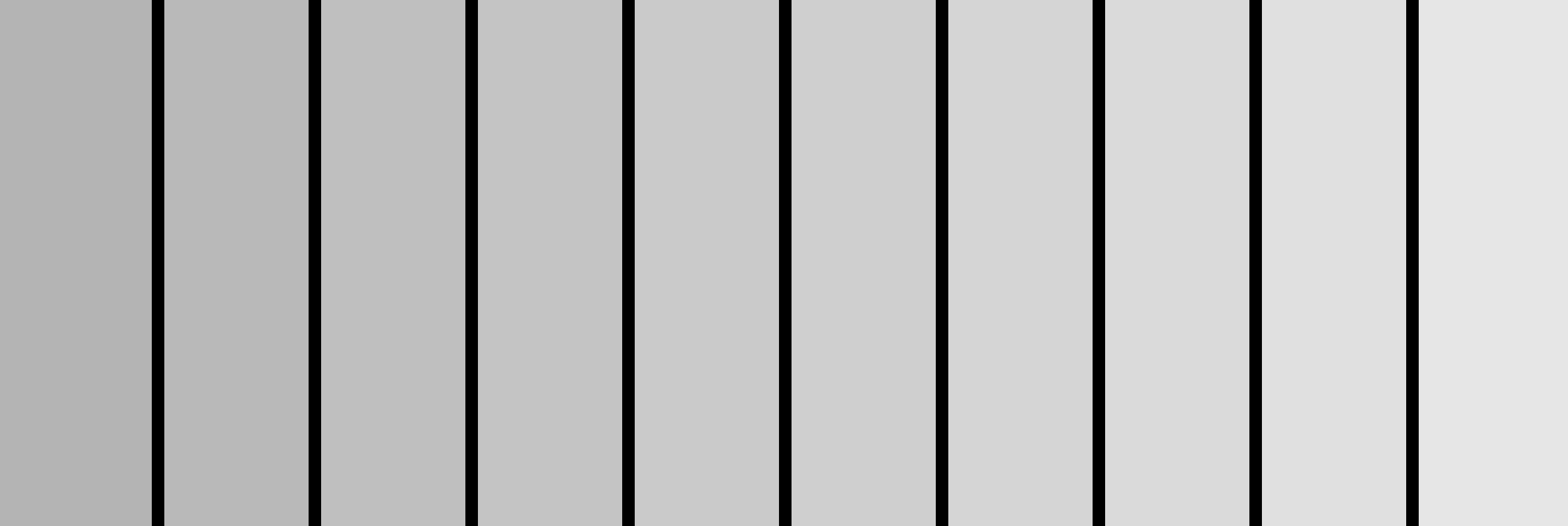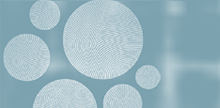|
Sensory Processing by Neuronal Networks
The brain receives information from the sensory
periphery in the form of activation patterns across many parallel
input channels, such as the photoreceptors in vision. An essential
task of the neuronal circuits receiving this information is to
extract from these input patterns information that is relevant to the
animal. Thus, even at the very first processing stages the aim is
not to transmit activation patterns - like the optical image on the
retina - unchanged to subsequent circuits, but rather to reshape
the inputs into output patterns that enable the downstream circuits
to access, store, and process the relevant information more easily
and effectively.
A familiar example of early reshaping of sensory
information is the processing of luminance information in the retina.
Rather than transmitting faithfully luminance information to the
brain the retina extracts in particular luminance differences:
spatial gradients and temporal changes in luminance. While in most
situations absolute luminance values are of little significance for
the behavior of an animal, large gradients typically indicate edges
delineating objects, which could be predators or preys, and temporal
changes likely signifiy motion. Figure 1 illustrates spatial
contrast enhancement in the retina.


Figure 1: Contrast enhancement in the retina illustrated
with adjacent rectangles of homogeneous luminosity. a) When the
rectangles are separated by black bars it is clear that the each
rectangle has spatially homogeneous gray level. Given that the gray
levels of adjacent rectangls are so similar one could imagine that it
is difficult to recognize the edge separating them. b) Without the
black bars, the edges are clearly visible because each rectangle
appears to become brighter towards the left where it contacts a
darker rectangle. This enhancement of the contrast between the
rectangles is generated in the retina, which transmits the illusion
of sharp edges to the brain.
Visual objects are typically delineated by edges; they
are identified by comparing the luminance of neighboring
pixels. This can be achieved by neuronal networks in which neurons
that transmit information about neighboring pixels inhibit each other
mutually. Since these neurons are physically close to each other
corresponding network connectivity is the relatively simple topology
of nearest-neighbor interaction. In fact, this contrast enhancement
is somewhat akin to backward diffusion, which sharpens gradients.
We are interested in the processing of olfactory
information. There the first processing is performed by the network
of the olfactory bulb. It collects the information provided by the
olfactory sensory neurons, which function as chemical sensors. Animal
species differ in their number of different types
of chemical sensors: flies have ~60, humans ~350, and
mice and rats have ~1000 different receptor types. Thus, the input to
the olfactory bulb consists of activation patterns across 60 to 1000
different channels. In analogy to the visual system one may expect
that the olfactory bulb enhances the difference (contrast) between
the activation patterns corresponding to similar odorants. Indeed,
this is what is found in experiments on zebrafish
(Fig.3B
in [2]);
while the input patterns for two odors can be very similar the
corresponding output patterns of the olfactory bulb can be quite
different. Thus, one function of the olfactory bulb appears to be the
decorrelation of odor representations.
A drastic difference between the visual and the
olfactory system is the character of the stimuli. The high dimension
of ‘odor space’ results in very complex
activation patterns (Fig.4
in [1]).
To achieve contrast enhancement in these patterns it is not
sufficient to compare neighboring ‘odor pixels’ (glomeruli).
Thus, the olfactory network exhibits inhibitory connection across
large distances, extending across a third of the whole olfactory
bulb. How is the connectivity in this complex network organized? How
does it arise? Given the propensity of the brain to adapt to the
tasks at hand, it is quite natural to assume that the bulbar network
can evolve and learn to separate similar odor stimuli that have
significantly different meaning for the animal. In a general
analysis [4] we have identified biophysical constraints for the
ability of neuronal networks to learn to separate (orthogonalize)
representations of similar stimuli.
A fascinating aspect of the olfactory bulb is that even
in adult animals its network connectivity is persistently being
restructured through neurogenesis. New neurons migrate into the bulb
continuously. But more than half of them die within 2 weeks of their
arrival. Significantly, it is observed that this survival depends on
the odor environment that the animals are exposed to and it is found
that if neurogenesis is suppressed the animals are less able to learn
certain odor
discrimination tasks[3]. Thus,
neurogenesis appears to play an important role in the animals’
ability to adapt to their changing environment.
To investigate how neurogenesis can provide a learning
mechanism for the animal we are developing very simple computational
models of the olfactory bulb that incorporate what we think are the
essential features of this process. In their simplest form these
models consist of a fixed population of excitatory relay neurons
(mitral cells) and an ever changing population of inhibitory
interneurons (granule cells). New granule cells are added to the
network randomly. Since their survival depends on how active they are
in response to an ensemble of training odor stimuli (the ‘natural
environment’), the network evolves toward a connectivity that is
better able to decorrelate the stimuli in this training ensemble.
So far it is quite a mystery why in the olfactory bulb
learning invokes the rather ‘expensive’ process of making new
neurons only to discard most of them later; in almost all other brain
areas learning results from a change in the connection strengths
between persistent neurons. With our modeling efforts we hope to shed
light on this and other fascinating aspects of olfactory processing.
References
[1] R. W. Friedrich and S. I. Korsching.
Combinatorial and chemotopic odorant coding in the zebrafish
olfactory bulb visualized by optical imaging. Neuron, 18:737,
1997.
[2] R. W. Friedrich and G. Laurent. Dynamic
optimization of odor representations by slow temporal patterning of
mitral cell activity. Science, 291:889, 2001.
[3] M. M. Moreno, Christiane Linster, Olga Escanilla,
Joëlle Sacquet, Anne Didier, and Nathalie Mandairon. Olfactory
perceptual learning requires adult neurogenesis. Proc Natl Acad
Sci U S A, Oct 2009.
[4] S.D. Wick, M.T. Wiechert, R.W. Friedrich, and H.
Riecke, Pattern orthogonalization via channel
decorrelation by adaptive networks, J. Comp.
Neurosci. (2009).
Last modified: December, 2010
Hermann Riecke (h-riecke at northwestern.edu)
| 



